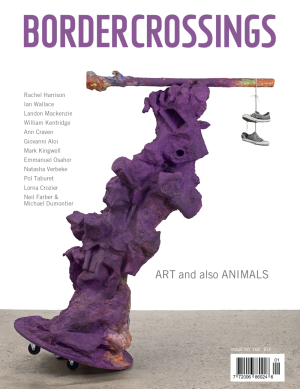Fellini’s Casanova: A Mechanical Child
Interviewer: Last year some of Casanova was taken and held for ransom. How much of the film was kidnapped?
Fellini: Unfortunately they stole only the first three weeks’ work. I was hoping they’d steal the rest of the picture.
As Fellini’s flip yet revealing remark about his latest movie suggests, the making of Fellini’s Casanova was not an experience of untrammeled joy for Frederico. After signing a contract to make the movie, Fellini read Casanova’s Memoirs (upon which the movie is very loosely based) and developed a severe — almost terminal — case of disgust for the 18th-century adventurer. Fellini found him to be “perfectly obnoxious,” and “a completely exterior person.” “He roamed the whole world,” Fellini noted, “and it is as if he never moved from his bed.”
Fellini’s response to Casanova’s Memoirs presented him with a serious problem. Accustomed since 8½ to making movies of total personal involvement which radiate his boundless powers of empathy and love, Fellini was confronted with a character and subject matter from which he was terribly distanced and alienated. The effects of Fellini’s dilemma have been apparent both in the making of the film and in the film itself. Production of Casanova dragged on for over three years, as Fellini struggled to get his story right — to get at his material in a way that was aesthetically and personally satisfying. And the result of this multi-year artistic struggle has been a film which is more distanced and less affirmative than anything Fellini has made since La Dolce Vita.
The negative conditions that pervade the world of Fellini’s Casanova and that ultimately deprive its inhabitants of individuality and life are strikingly imaged in the film’s opening sequences — an extravagant celebration which in baroqueness and dehumanized spectacle rival halftime at the Orange Bowl. The celebration honors Venus — not only as Goddess of Love, but also as divine “Mother” of Venice. The participants are all indistinguishable, concealed as they are behind and under elaborate masks and cloaks. And the festivities abort when the “star of the show” — a gigantic image of Venus’ head — fails to attain its expected birth from the waters of Venice and ignominiously sinks beneath the surface. The destruction of individuality through disguise and roleplaying, the childish adoration of Woman-as-Mother, the reduction of human love to idealized abstraction (cf. Venus as nothing more than an enormous Head), and the consequent failure of love to be born as a vital, concrete, self-renewing force — all these are introduced as life-denying impulses and conditions that will plague Casanova and his Counter- Reformation/Enlightenment world for the remainder of the movie.
Like the image and power of Venus in the opening sequence, Casanova’s powers of love (his feminine powers) are incapable of birth or growth in the course of the movie. Unable to coordinate his mind with his heart, Casanova constantly misconstrues his need to develop a vital femininity within as a desire to conquer every female he encounters without. And all the while he remains imprisoned in the womb of his own immaturity, seeking always to return to Venice — the moist, placental world of his past and the image for him of an eternally protective Mother. As the film progresses and as his head and sexuality become increasingly dissociated, he gets caught up in increasingly bizarre sexual adventures; he moves from “lovemaking” with a reasonably attractive nun early in the movie to pursuing giantesses, sorceresses, and hunchbacks. The grotesqueness of his sexual adventures serves to image the growing grotesqueness and deterioration of his potential for love, and the mechanical doll who serves as his final sexual partner serves as the image of the total mechanization of Casanova’s feminine powers.
Casanova isn’t all bad, however. Fellini, in keeping with his career-long genius for infusing even his most negative characters with something worth loving, allows Casanova the dignity of dawning self-awareness. As the film draws to a close Casanova, now an old man, rejects the illusion that he will get back to Venice (i.e., a state of permanent insulation from reality). Freed from this illusion, he experiences a moment of self-examination and self-revelation. He recounts a dream he has had the evening before and, in so doing, “confesses” to the emptiness of his life. The dream, which provides the film’s final images, reveals a young and robotic Casanova following the directions of his “parents” (his mother and the Pope), discovering the mechanical doll he once made love to, and joining her in a marriage/ dance of the canals can be seen the image of Venus’ head which, unable to rise in the film’s opening sequence, is still dormant, immobile, powerless. In sharing this dream with us, Casanova acknowledges that his lifelong procession of amorous adventures has been nothing more than the activity of a mechanical child, divorced from its own potentials for love, and capable only of marrying the image of its own (f)rigid sexuality.
Too little and too late to be a force capable of redeeming a wasted life, Casanova’s dream of self-awareness is, nevertheless, a humanizing act that helps make Casanova a tragic rather than merely an absurd creature. It also injects Fellini’s Casanova with the kind of empathy we usually associate with a Fellini movie and which has been lacking through so much of the film. It’s as though Fellini’s own powers of love, having suffered film-long confinement in the story and image of Casanova, are rejuvenated and released as the film comes to a close — breaking out and readying themselves for something new and vital: i.e., Fellini’s next movie.
Frank Burke teaches film at the University of Manitoba. He is a frequent panelist at Film Symposia in the United States. His book on the films of Fellini will be published in the fall by Twayne.

